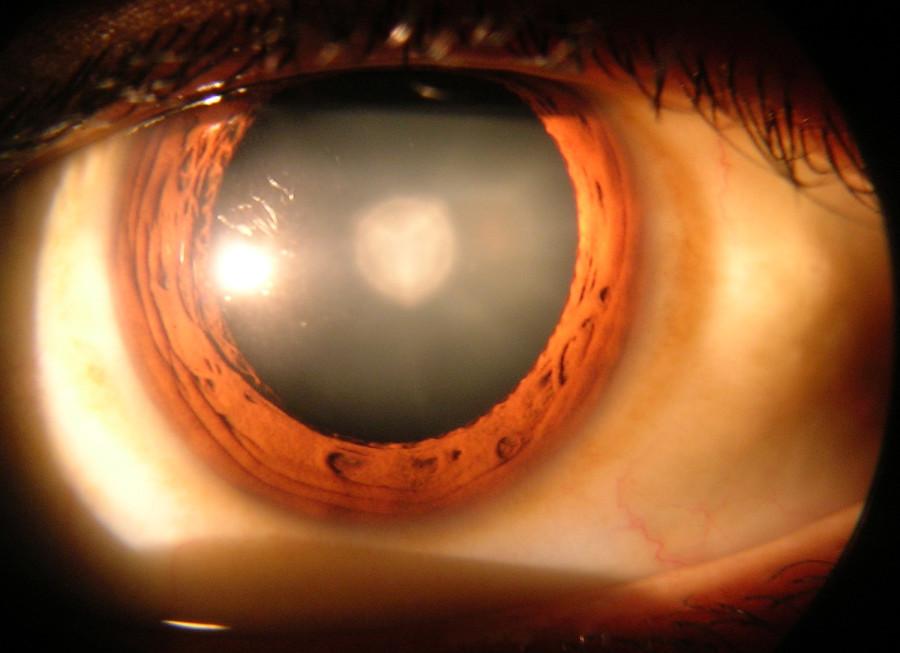FAU study working to eliminate cataract surgery
FAU researchers discover new cell-eating mechanism used by eye lens cells to protect themselves against UV light.
Cataract are the leading cause of vision loss in the US, and FAU researchers have made a discovery that can help treat cataracts without surgery. Photo courtesy of Rakesh Ahuja.
December 23, 2015
A new discovery highlighting the interaction between cells might lead to the elimination of cataract surgery.
Using cells from the eye lens, FAU researchers discovered when cells are in close proximity to each other, they have the ability to sense when a cell is dying, and will eat the cell. Cell death can be caused by environmental factors such as UV light, pollutants and smoke.
Marc Kantorow, director of graduate studies of the FAU College of Medicine, explained that the research was important because it accounted for how the lens defends itself against UV light without a constant blood supply.
He also added that damage to the lens leads to cataract formation. A cataract is a condition where the lens becomes cloudy, leading to a visual disability. Twenty percent of this formation is caused by UV exposure.
Cataract formation is the leading cause of vision loss in the United States according to the Centers for Disease Control and Prevention (CDC).
The discovered mechanism used by lens cells could lead to the development of treatments and therapies that would eliminate the need for surgery — the only way to treat cataracts today.
This process prevents toxicity and the accumulation of dead cell material. A buildup of dead cells can be toxic to epithelial tissue which can be found in the cornea, lungs and skin — leading to autoimmune, inflammatory and degenerative diseases.
Lisa Brennan, associate research professor, said in a press release, “Before the study, it was common knowledge that specialized immune cells, phagocytes, would go into the tissue and were responsible for eating the dead cells.”
Kantorow stated, “The research began when we were trying to figure out how would a lens do things that blood cells can do. Most tissues in the body have macrophages and phagocytes that come in and eat cells but the lens doesn’t have a blood supply.”
To figure out how the lens gets rid of dead cells, the researchers hypothesized that lens cells could do the same job as red blood cells — by acting as phagocytes themselves.
Daniel Chauss, a Ph.D. candidate student in Kantorow’s lab, tried to observe the lens cells to discover the cell-eating mechanism. It was during this experiment that the process was seen.
Lens cells belonging to embryonic chickens were engineered to be fluorescent red and green, instead of typical clear lens cells. The green lens cells were artificially created and were dead, while the artificial red cells were alive.
When they were together, the living red lens cells ate the green cells, turning the cells a yellow color.
Kantorow and his collaborators’ research was published in the Dec. 15 issue of the International Journal of Biochemistry and Molecular Biology and can be found here.







Jeanette Preminger • Dec 28, 2015 at 8:29 am
Hi…I’m interested in your alternative program for people who need cataract surgery. Can you please advise me accordingly? Thanks in advance, Jeanette Preminger